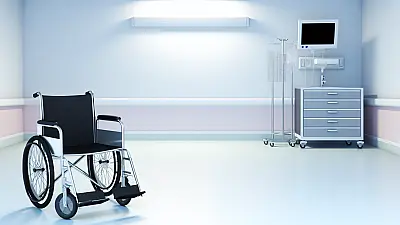NEW BRAUNFELS, TX - State inspectors cited Legend Oaks Healthcare and Rehabilitation for failing to properly document and monitor a resident's use of bed rails, creating potential safety risks through inadequate care planning.

Care Plan Documentation Failures
During a March 28, 2025 inspection, surveyors discovered significant gaps in the facility's care planning process for a resident who required bed rails for mobility assistance. Resident #92, a cognitively intact individual with no mental impairment as evidenced by a perfect BIMS cognitive assessment score of 15 out of 15, had physician orders for quarter-length side rails to assist with repositioning and mobility following an amputation.
However, the facility's care plan, initiated February 24, 2025, contained no documentation of the resident's need for or use of these mobility aids. This omission represented a fundamental breakdown in the person-centered care planning process that nursing homes are required to maintain for each resident.
During the inspection, surveyors observed the resident in bed with quarter-length side rails raised on both sides. When interviewed, the resident confirmed he used the rails for bed mobility, stating his "life changed since his amputation" and acknowledging his reliance on the safety equipment for movement assistance.
Medical Significance of Proper Care Planning
Care plans serve as critical communication tools that ensure all staff members understand each resident's specific needs, interventions, and potential risks. When mobility aids like bed rails are not properly documented, it creates several medical and safety concerns.
Bed rails, while helpful for mobility assistance, can pose entrapment risks if not properly monitored. Residents can become trapped between rails and mattresses, potentially leading to serious injuries or death. Additionally, rails can create fall hazards if residents attempt to climb over them rather than asking for assistance.
Proper documentation ensures that nursing staff understand why the equipment is necessary, how it should be used, and what monitoring protocols must be followed. Without this documentation, staff may be unaware of the resident's specific needs or the potential risks associated with the equipment.
Industry Standards and Required Protocols
Federal regulations require nursing homes to develop comprehensive, person-centered care plans that address each resident's medical, nursing, and psychosocial needs as identified through thorough assessments. These plans must include measurable objectives and specific timeframes for meeting identified needs.
The facility's own policy, reviewed in February 2025, clearly stated that interdisciplinary teams must develop comprehensive care plans that address needs identified in resident assessments. The policy emphasized the importance of including all necessary interventions and monitoring requirements.
When mobility aids are prescribed, care plans should specify the type of equipment, the medical justification for its use, monitoring requirements, and staff responsibilities for ensuring safe utilization. This documentation helps prevent accidents and ensures consistent care across all shifts.
Staff Recognition of Documentation Gaps
The facility's MDS Coordinator and Licensed Vocational Nurse acknowledged the deficiency during the inspection interview. She confirmed that side rail usage should be reflected in care plans to ensure staff awareness and appropriate risk monitoring.
The coordinator specifically stated that the absence of this documentation in Resident #92's care plan "could result in staff not monitoring the risks involved and it could further result in an accident or injury." This acknowledgment demonstrated the facility's understanding of the potential consequences of inadequate care planning.
Additional Issues Identified
The inspection revealed that the resident expressed feelings of being "cooped up," suggesting possible concerns about mobility limitations or activity restrictions that may require additional attention in care planning.
The discrepancy between physician orders and care plan documentation indicated potential communication breakdowns between medical staff and nursing personnel responsible for implementing daily care interventions.
Regulatory Impact and Facility Response
The violation was classified as causing minimal harm or potential for actual harm, affecting few residents. However, the deficiency represents a systematic issue in the facility's care planning process that could affect other residents if not properly addressed.
The Centers for Medicare & Medicaid Services requires nursing homes to submit correction plans addressing how they will prevent similar occurrences in the future. These plans typically include staff training, policy revisions, and enhanced monitoring procedures to ensure comprehensive care planning for all residents requiring mobility assistance equipment.
Full Inspection Report
The details above represent a summary of key findings. View the complete inspection report for Legend Oaks Healthcare and Rehabilitation - New Br from 2025-03-28 including all violations, facility responses, and corrective action plans.
💬 Join the Discussion
Comments are moderated. Please keep discussions respectful and relevant to nursing home care quality.